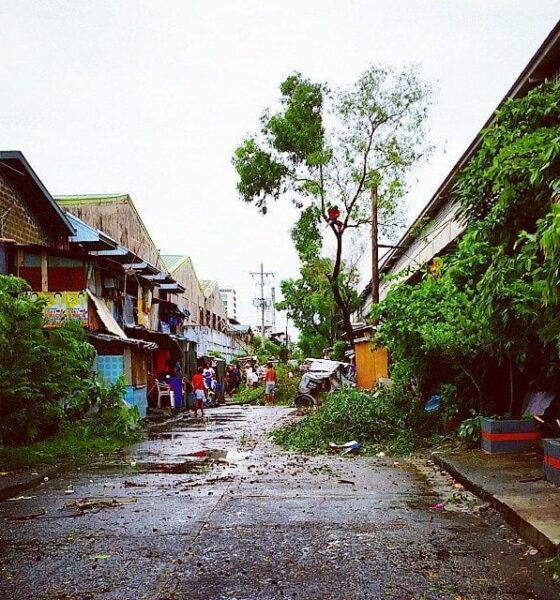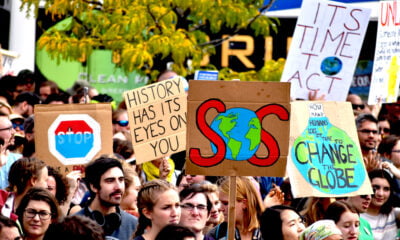

News
Thousands evacuate as Typhoon Rammasun strikes Philippines, killing 10
Almost 150,000 people have been evacuated from their homes as Typhoon Rammasun, known locally as Glenda, hit Manila, the capital city of the Philippines – closing the entire city down.
Financial markets, government buildings and schools have all been shut following the Philippines weather authority (PAGASA) upgrading the storm to signal level three – the highest typhoon warning designation.
Rammasun is already the strongest storm to hit the Philippines this year, as its eye passed south of Manila, leaving a path of destruction in its wake – resulting in power cuts, electrocutions and roads being blocked by trees.
Manila Bay’s slum residents have also been evacuated as the typhoon created storm surges, with fears of mass flooding devastating a city still recovering from superstorm Typhoon Haiyan, which struck last year, killing more than 6,000 people.
The country is also under threat from rising sea levels, in particular its coastal cities like Manila – as global warming and sinking land elevations make storms even more damaging.
The devastation caused by Haiyan had prompted the Philippine government to divest from fossil fuels, in an attempt to curb carbon emission levels, in order to prevent another superstorm from reoccurring.
The Philippines Red Cross (PRC) has been on high alert since the typhoon was seen approaching the islands. Talking to Reuters, the PRC chairman, Richard Gordon, has described minimal damage to the capital city, with hospitals still being able to function properly.
He added, “We have not received reports of major flooding in Metro Manila because the typhoon did not bring rain, but the winds were strong.”
However, rainfall predictions are expected to get significantly worse, with fears of similar devastating results as Haiyan prompting residents to flee to higher ground.
Tropical Storm Risk, which monitors storms like Rammasun, has labelled the typhoon a category-two storm, on a scale of one to five. Haiyan was category five.
Photo source: Daniel Go via Flickr
Further Reading:
Philippines builds first large solar park in bid to curb fossil fuel reliance
Look to the sun and save lives: solar power in post-Haiyan Philippines
Super typhoon in Philippines ‘most damaging’ storm of past century


 Features9 months ago
Features9 months agoWhat is the Eco-Friendliest Option to Wash Your Dishes?

 Environment12 months ago
Environment12 months agoBuilding a Career in Green Construction: Tips and Insights

 News11 months ago
News11 months ago5 Ways Fleet Maintenance Software Can Help Businesses Be More Eco-Friendly

 Features10 months ago
Features10 months agoAddressing Pressing Ethical Concerns with Crypto Exchanges






























